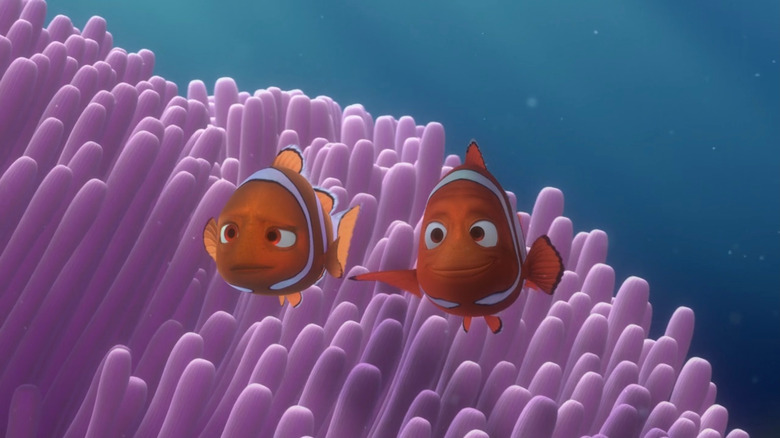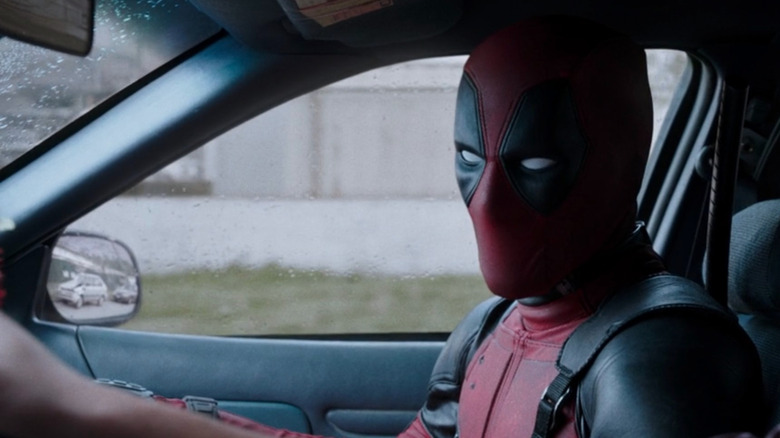The Alternate Cuts Of Finding Nemo And Deadpool That Completely Changed The Movies [Comic-Con]
While people might decry the idea of movies being "made by committee," the truth is, every movie has a huge creative committee of sorts behind it. Theoretically, it's up to the director to lead the group and guide various department heads toward a shared vision that will make the best possible film. Doing so might mean receiving notes from producers, studio executives, and whoever else; the notes could give bad suggestions or they could provide useful insights that enable the filmmaker to rewrite or reshape the movie and make it better.
This is all a roundabout way of saying that the G-rated "Finding Nemo" and the R-rated "Deadpool" — two films that couldn't be more different in content — share a very Hollywood thing in common. They were both molded in significant ways by notes, as revealed by directors Andrew Stanton and Tim Miller at San Diego Comic-Con 2022. Stanton and Miller appeared in Collider's Directors on Directing Panel, moderated by Steven Weintraub and attended by /Film's Jacob Hall.
When asked to share their stories of bad or helpful notes they had received during the filmmaking process, Stanton spoke first, saying it was suggested that they "cut the mutant toys out of 'Toy Story.'" ("Of course, we didn't take that," he said.) He followed this up with a story from his time on "Finding Nemo":
"The good advice I got, and was suggested for a while before I listened to it, was I used to have the entire tragedy of Nemo that begins the story that used to be doled out in flashbacks throughout the entire story ... and you slowly solve the mystery. And once I finally took their advice and listened and put it all in front and told it linearly, of course, the end result worked much better."
Miller had the opposite experience
As Andrew Stanton admitted, "Finding Nemo" works better the way it is, with the clownfish Marlin, voiced by Albert Brooks, losing his wife and most of their eggs right at the start. While withholding the full story of what happened to her might have made for an interesting late twist, putting it up front — as opposed to dispensing it in a nonlinear fashion — immediately grounds us in Marlin's character motivations and makes it understandable why he would be overprotective of his son, Nemo. For his part, Tim Miller said:
"I had the opposite happen. They made me do a linear cut of 'Deadpool.' ... We never shot it that way, it was not planned to be that way, and they made me do it, anyway. And then they looked at it and said, 'Okay, you've got to put it back.' But the tragedy is you had to waste time doing it."
Although that particular "Deadpool" note was not helpful to Miller and his crew, he did relate another instance where co-producer Simon Kinberg pointed out something in the editing room that helped solve a narrative problem and made Miller realize he'd been wasting his own time. Miller said he spent years working with a draft of the "Deadpool" script wherein Ed Skrein's character, Ajax, went to prison, leaving Wade Wilson (Ryan Reynolds) to wait for him on the outside as he trained to become Deadpool. The film was shot this way, but according to Miller, "it never played right," and it wasn't until Kinberg made an offhand suggestion about cutting the Ajax-in-prison part out that Miller landed on the right narrative direction.
The moral of the story? It's okay to let Dopinder drive, and maybe being receptive to outside feedback isn't such a bad thing.

